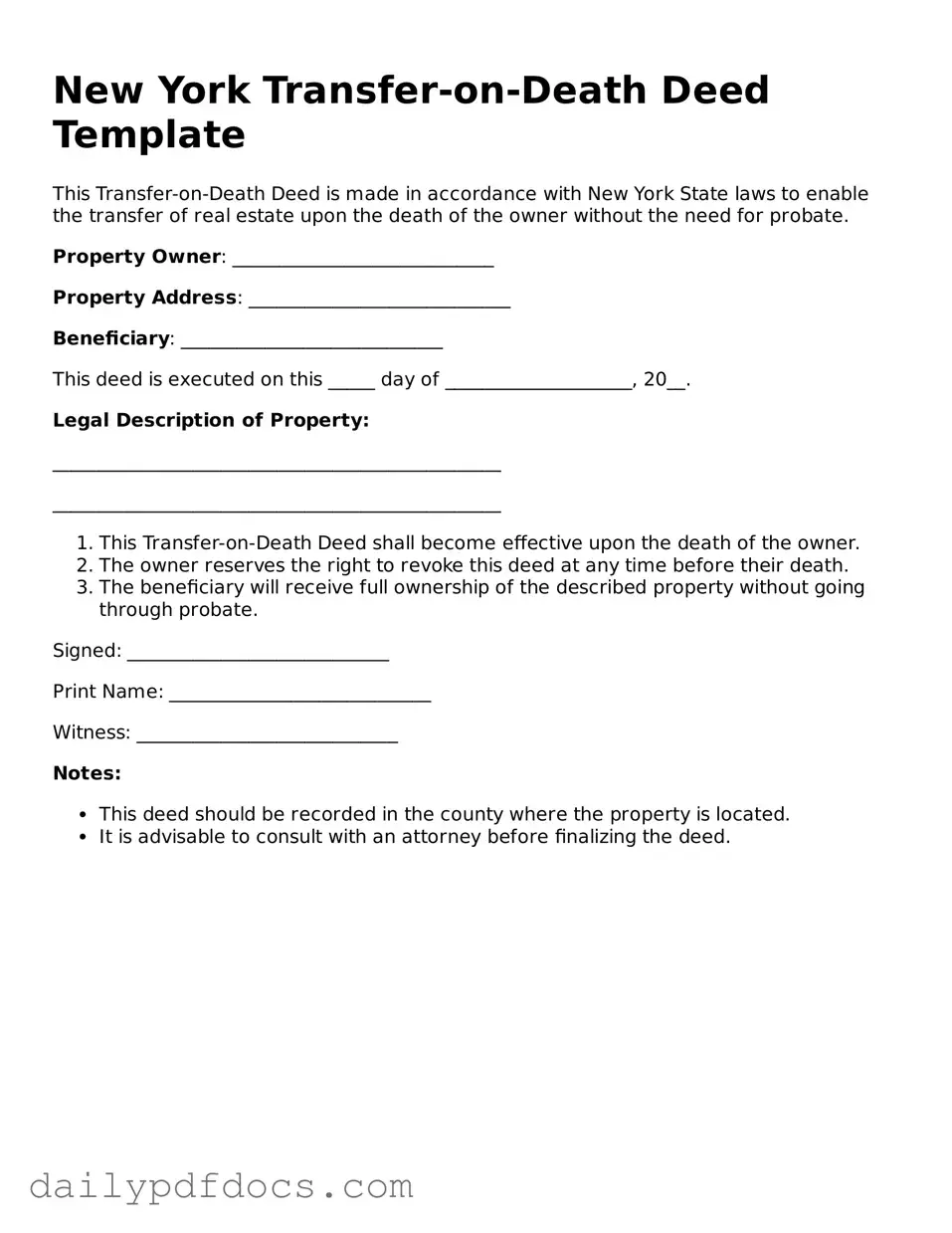What is a Transfer-on-Death Deed in New York?
A Transfer-on-Death Deed (TOD Deed) allows property owners in New York to transfer their real estate to a designated beneficiary upon their death. This deed does not take effect until the owner passes away, meaning the property remains under the owner’s control during their lifetime.
Who can be a beneficiary of a Transfer-on-Death Deed?
Any individual or entity can be named as a beneficiary in a Transfer-on-Death Deed. This includes family members, friends, or even organizations. However, it is essential to ensure that the beneficiary is legally capable of receiving the property.
How do I create a Transfer-on-Death Deed?
To create a Transfer-on-Death Deed, you must complete the form, providing details about the property and the beneficiary. The deed must be signed by the owner in the presence of a notary public. After signing, the deed must be recorded with the county clerk's office where the property is located to be legally valid.
Can I revoke or change a Transfer-on-Death Deed?
Yes, you can revoke or change a Transfer-on-Death Deed at any time before your death. To do this, you must create a new deed that explicitly revokes the previous one or simply record a revocation document with the county clerk's office. Ensure that you follow the proper procedures to avoid confusion.
What are the benefits of using a Transfer-on-Death Deed?
One of the main benefits of a Transfer-on-Death Deed is that it allows for the seamless transfer of property without going through probate. This can save time and money for the beneficiaries. Additionally, the property owner retains full control of the property during their lifetime, allowing them to sell or mortgage it as they see fit.
Are there any tax implications with a Transfer-on-Death Deed?
Generally, there are no immediate tax implications when using a Transfer-on-Death Deed. The property is not considered a gift until the owner passes away. However, beneficiaries may be responsible for property taxes and any potential capital gains taxes when they sell the property. Consulting a tax professional is advisable to understand the specific implications.
Is legal assistance necessary to complete a Transfer-on-Death Deed?
While it is not legally required to have an attorney to complete a Transfer-on-Death Deed, seeking legal assistance can be beneficial. An attorney can help ensure that the deed is filled out correctly, complies with all legal requirements, and aligns with your overall estate plan.
